BERLIN, 2 December 2018
An endless scream of a man holding his injured child dazed in dust, as immortalised in this very influential artwork, uncovering horrifying scenes from one the bloodiest present-day conflicts.
Seven years later, as I walk through the cold streets of Berlin, totally oblivious to the sounds around me, I try to anticipate the stories that I was soon to discover through an artist's suitcase.
A suitcase carrying memories of a plague of brutality, bringing to a tragic end the lives of hundreds of thousands of Syrian people, and displacing some other millions, who since then have embarked on harrowing journeys in search of a safe home.
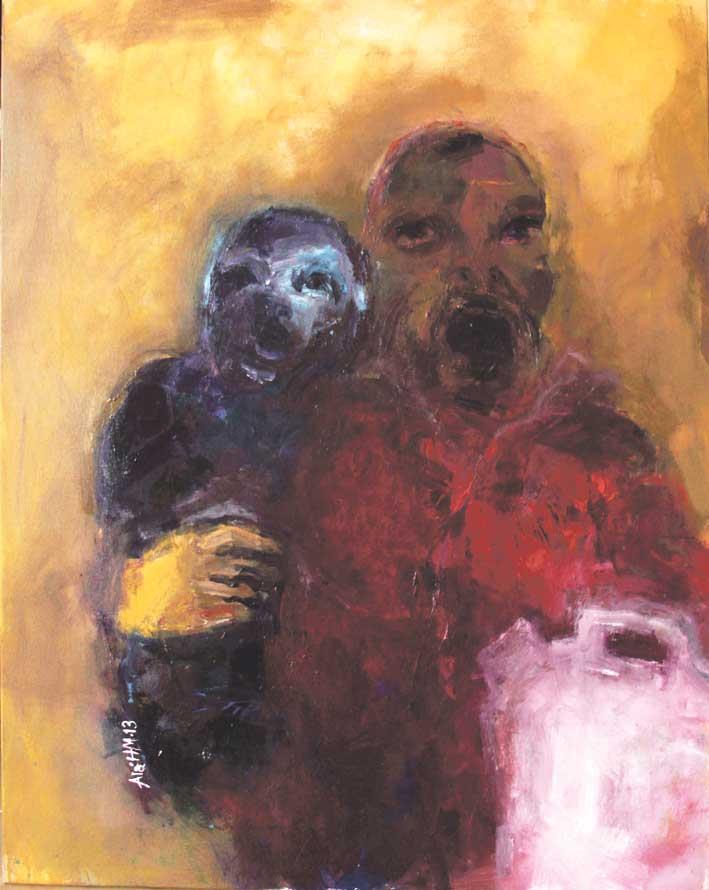
Among them, were most of the country's talented artists who sought asylum in various European capitals, such as in Paris, and in the creative haven of Berlin. Here is where I caught up with Ala' Hamameh.
Ala' was already an accomplished artist living in Damascus when the Syrian antigovernment uprising began in 2011.
Born in Aleppo, and raised in the city of Masyah, his move to the Capital was what really shaped his artistic future. While conversing about his past, I could not help but ask him about his childhood memories, and his first approach to art.
He explained that he can only recall that as a child, he felt captive in a dream of vibrant colours. It was very clear that later, this fascination for colour held a promise of a very unique gift, which he continued to explore and develop while reading for a Bachelor's Degree in Visual Communications at Damascus University.
It was here that he understood how colour can be so powerful in voicing any reality we may try to deny. A harsh reality, which in Syria, was voiced and ruled by an oppressive regime.
A reality, which some abided with, and which others refused to succumb to.
"In those days, if you wanted to be a good artist in Syria you had to follow the rules and please the Regime. They controlled all the galleries and institutes. There were no independent bodies."
Nevertheless, while in Damascus, Ala' continued working on developing a solid identity of his self-expression, showcasing rich and varied artistry including; painting, photography, graphic design, installations and video art.
Following the outburst of the revolution, it was impossible to continue this form of art as the regime suppressed all kind of free photography and documentaries. Not having the possibility of capturing the daily scenes of the war's outcome, he resorted to painting on canvas. Eventually, this technique helped him to shape the very essence of his vision, and here is where his colours became the luck of violence! His canvasses acquired bright, harsh colours, which in some sense equivocated and deceived the ruthless scenes, but which in turn reflected fearlessly the ugly coloured face and viciousness of war.

"Later, in Damascus, my colours became the luck of violence."
When the war reached its climax, following a progression of daily hostility and bloodshed, he had no
choice but to flee his homeland. Concurrently, in 2015, he was invited by the Cultural Centre of Berlin to present his project 'Dialog Tables' at a press conference, with the scope of discussing the concept of dialogue and its meaning in the context of socio-political unrest.
Being granted asylum soon after, here is where he remained ever since.
Although Syria was the cradle of his spirit, the land of his childhood, and the soil in which all of the themes of his artwork are rooted, Germany, a centre for progressive trends, granted him a voice and the right tools where he now continues his creations by relying on his memories, who unlike many others, he forces not to forget.
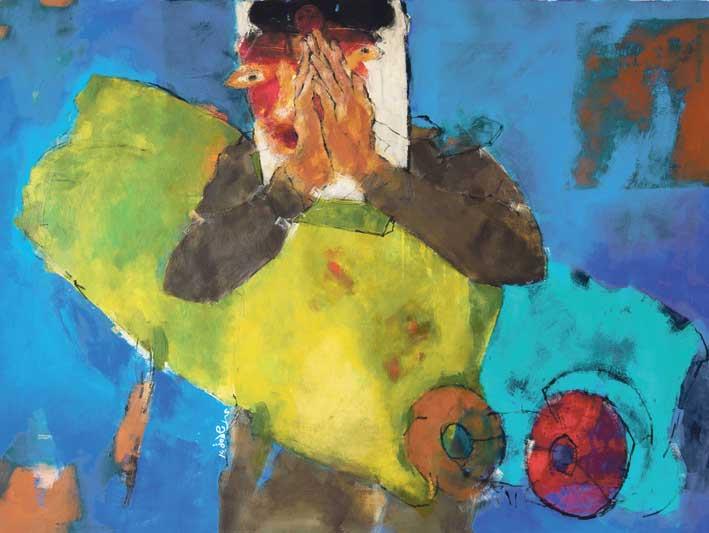
Artwork and style
His exhibit appears to me as a complex poem of terror, pain and death, and while I struggle to understand through the intricacy of the colourful layers, Ala' smiles, and explains to me that he only manages to accomplish such results by completely rejecting immediate perception as inflicted in his memory, while building on more complex psychic structures.
He develops this by focusing on a drastic use of altered hues that separate colour from its usual
representational and realistic role.
His 'dialog tables' series is an example of this radical approach, where his scenes are worked in bold, clashing colours, executed through unrelenting brushwork.
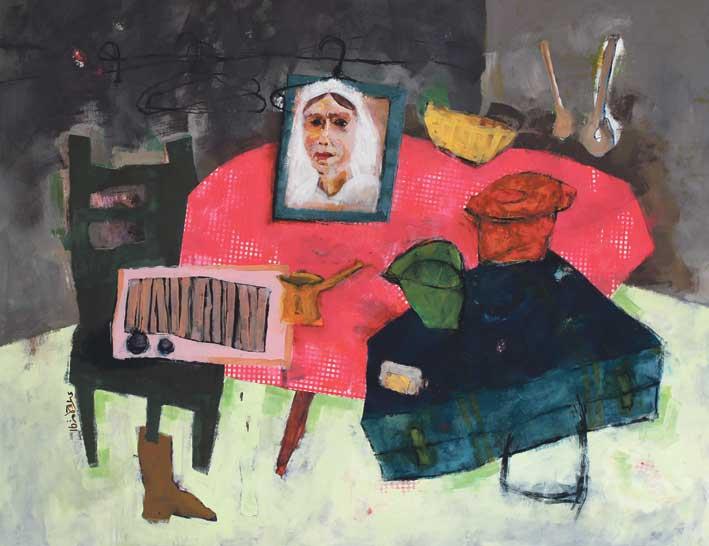
In this way he gives a new emotional meaning to the colours, bringing to live scenes beyond belief!
Through this set of artwork runs a powerful, yet disconnected dark line. This line assists him in clarifying his ideas, dividing the intense colour planes, while containing a constructive power of terror.
So distinctively, he is also able to reconcile the contrast between the vivid colours and the "frenzied" character of his subjects. As apparent through their nervous gestures and restless movements, these figures play a very important role by marking a link of tension through the whole series.
Though their eyes are open-wide, their faces are featureless, as they are in the face of war. Prisoners of faith, or terrorised mothers. They all play their role in Ala's creative atmosphere of moral repression.
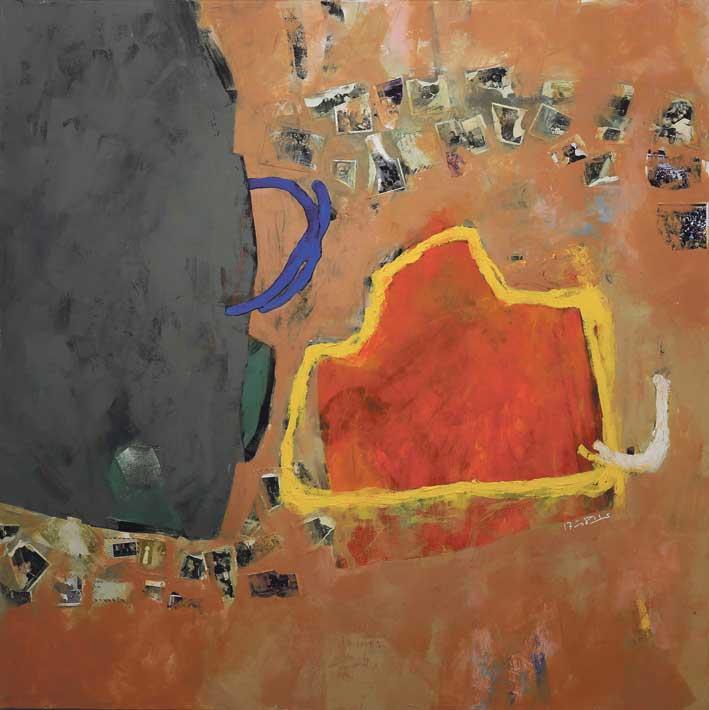
"My characters have had no clear features until now. They are still trying to symbolize the Syrian scene, sometimes, through heavy armoured vehicle or figures resting on 'Dialog Tables' and stuffing their pockets and suitcases with what has remained of the memories of each displaced person, emigrant, or refugee."
And from the back, a dark grey shadow of death encroaches, contrasted by the warm orange shade of the dialog table, giving some hope of "light"!
The turbulent colours in this series are kept in check by his creative structural sense. As so often, the composition fundament is the meeting of the horizontal (herein represented by the orange table) and the vertical (represented by the dark hooded figure).
This provides an element of stability, holding scene together.
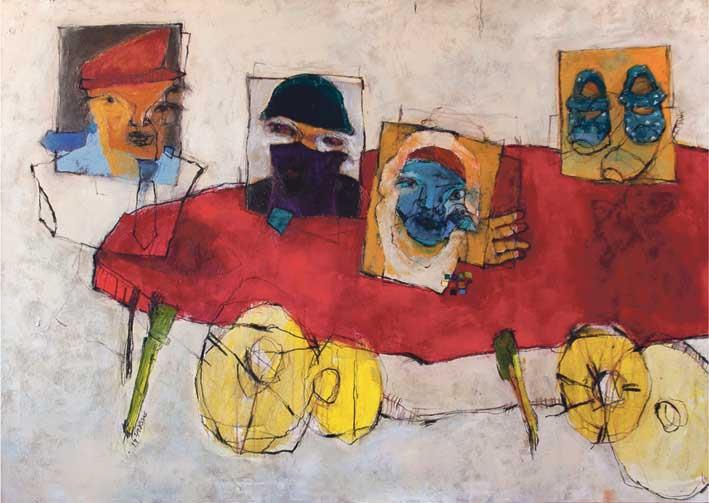
Ongoing project: "A Suitcase Memory" 2017 -2018
Seeking new methods and means to communicate with various audiences, Ala's Suitcase Memory is a project stemming from the pain and the psychological trauma he experienced during such a large-scale disaster.
I witnessed such memories for the very first time while his video-art was being showcased at the Muza Museum of Art in Valletta, following exhibitions in Paris, Dusseldorf, Geneva, Frankfurt, Montpellier and Istanbul.
A collection of scripts, sketches, paintings, and installation, as well as this exceptional video-art, reflecting a personal expression of emotional angst, again uttered through an intense mixture of colours!
However, this was not sufficient to bring these memories back to live, some of which were very predictable. In his paintings he tried to utilise various different visual elements. A scattered inclusion of people's personal photos brings real life stories to the fore-front to create an unpredictable collective memory of such people.
A witness of the stories of those who screamed for freedom and justice. Of those who escaped torture and rape. Of those who could not stand persecution and atrocities committed by the regime
and foreign rulers.
When I asked him about the very first idea behind this Suitcase Memory, Ala' described it as a very
personal memory.
When he left Damascuswith only his suitcase, he also had to leave everything and everyone behind.

Upcoming project: 2019
After his first three years in exile, he became aware that his biggest fear was forgetting! Talking about memory after seven years of war, did not only become an essential part of his work, but developed into an approach towards a fertility of impact and a future of influence.
While he regards his previous project 'A Suitcase Memory' as his personal navigator, which gave him the coordinates of his new geographical position, and helped him maintain his balance on the new soil of this war free home, for his next project, Ala' resists forgetfulness by reviving his fears once again.
In need of delicate, explicit and strong memory, he also requires to recall more sensible senses, such as a voice, and its echoes. He explains to me that the voice is an essential constituent of shape and its spirit. Through its capacity, the faces, names and places, could be recalled even when they do not exist anymore!
"Memory is the ailment of truth, and the nightmare of tyrants. Who owns it knows exactly how to recall anger, even after the disappearance of the victim, and even after the revolution ends."